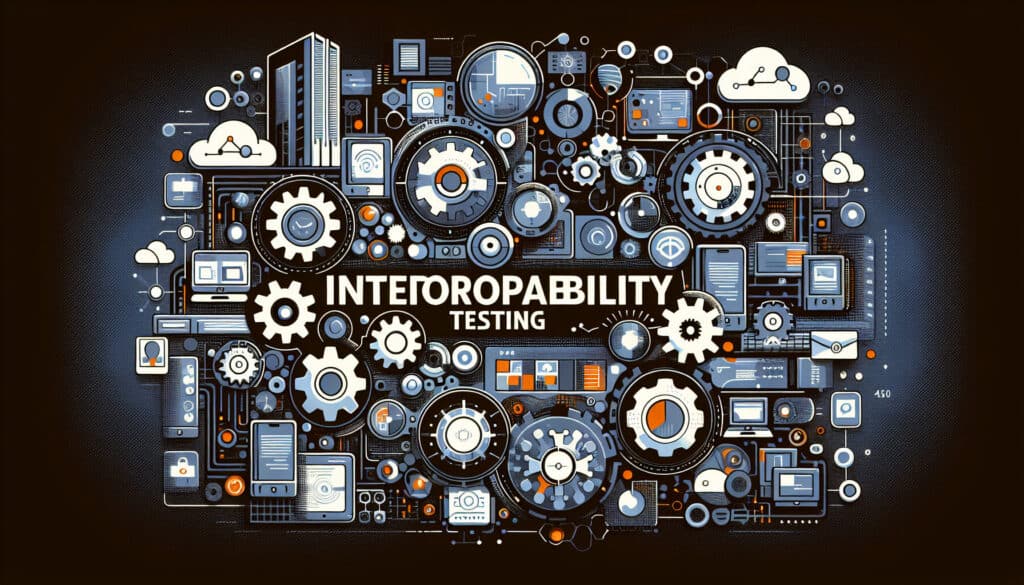To verify that different برمجة systems can work together.
- المنهجيات: العملاء والتسويق, الاقتصاد
Interoperability Testing

Interoperability Testing
- المنهجية الرشيقة, واجهة برمجة التطبيقات (API), التحسين المستمر, هندسة البرمجيات, اختبار البرمجيات, اختبار قابلية الاستخدام, تجربة المستخدم (UX), واجهة المستخدم (UI)
الهدف:
كيفية استخدامه:
- A type of testing that determines the ability of two or more software systems to exchange information and use the information that has been exchanged.
الايجابيات
- Ensures that different software systems can work together as expected; Can improve the user experience and reduce development costs.
سلبيات
- Can be complex and time-consuming to perform; May require a dedicated test environment.
الفئات:
- الهندسة, الجودة
الأفضل لـ
- Testing the ability of different software systems to work together, for example, between a web browser and a web server.
Interoperability Testing finds extensive application across various industries, particularly in sectors such as healthcare, finance, telecommunications, and software development. In healthcare, for instance, interoperability ensures that electronic health record systems can communicate effectively, allowing for seamless data exchange between practitioners, thus enhancing patient care quality. In the finance sector, testing ensures that different banking applications, payment gateways, and financial management systems can interact securely, facilitating transactions and compliance with regulations. This methodology can be initiated during the software development دورة الحياة, especially in the integration and testing phases, ensuring that each component meets specific interoperability standards before deployment. Teams that should participate include software engineers, quality assurance testers, and system architects, who collaborate to identify potential compatibility issues early in the project. Emphasizing robust interoperability testing reduces long-term costs associated with troubleshooting and rework, leading to a more efficient development process. Various tools and frameworks exist to facilitate this testing, including automated testing environments that can simulate interactions between diverse systems, observing how well data is exchanged and utilized across platforms, thus ultimately improving user satisfaction and application reliability. As industries continue to adopt microservices architecture and cloud-based solutions, the importance of a structured interoperability testing approach becomes increasingly evident, necessitating teams to keep pace with evolving standards and protocols while ensuring that their systems remain compatible with both legacy and emerging technologies.
الخطوات الرئيسية لهذه المنهجية
- Identify interoperability requirements based on the systems involved.
- Develop test cases that reflect real-world scenarios for data exchange between systems.
- Execute the interoperability tests by running the software systems in tandem.
- Validate data exchanged for accuracy, completeness, and adherence to agreed formats.
- Document any discrepancies, including both functional and non-functional issues encountered.
- Collaborate with development teams to analyze issues and implement necessary adjustments.
- Re-test to confirm that all identified issues have been resolved and that systems function as intended.
- Establish ongoing monitoring to ensure continued interoperability through subsequent updates.
نصائح للمحترفين
- Incorporate real-world use cases early in the testing process to identify practical interoperability challenges, which can reveal hidden assumptions in system design.
- Establish clear communication protocols between systems, including data formats and error handling procedures, ensuring they are documented and accessible to all stakeholders.
- Utilize automated testing frameworks that support multi-system interactions, allowing for efficient regression testing as updates are made to any interfacing component.
لقراءة عدة منهجيات ومقارنتها, نوصي باستخدام
> مستودع المنهجيات الشامل <
مع أكثر من 400 منهجية أخرى.
نرحب بتعليقاتكم على هذه المنهجية أو المعلومات الإضافية على قسم التعليقات أدناه ↓، وكذلك أي أفكار أو روابط متعلقة بالهندسة.
السياق التاريخي
1992
1996
1998
2000
2000
2003
2013-09-24
1992
1994
1997
1999-05-01
2000
2002
2013
(إذا كان التاريخ غير معروف أو غير ذي صلة، على سبيل المثال "ميكانيكا الموائع"، يتم تقديم تقدير تقريبي لظهوره الملحوظ)














منشورات ذات صلة
إدارة عمليات التصنيع (MOM)
نظام تنفيذ التصنيع (MES)
خطة مراقبة التصنيع
الاختبار اليدوي
مخططات تقييم المناولة اليدوية (MAC)
أداة تقييم مخاطر المهام اليدوية (ManTRA)